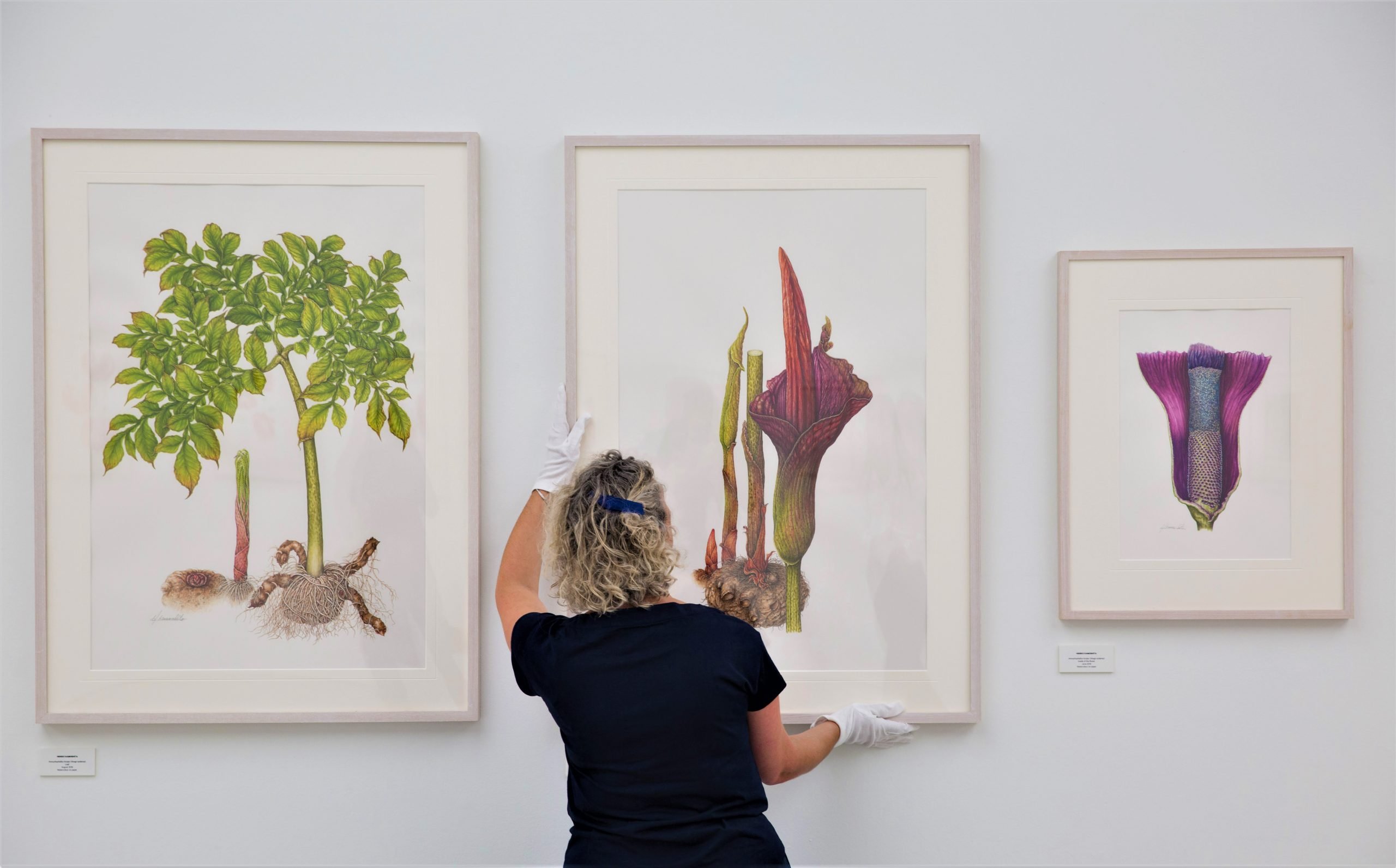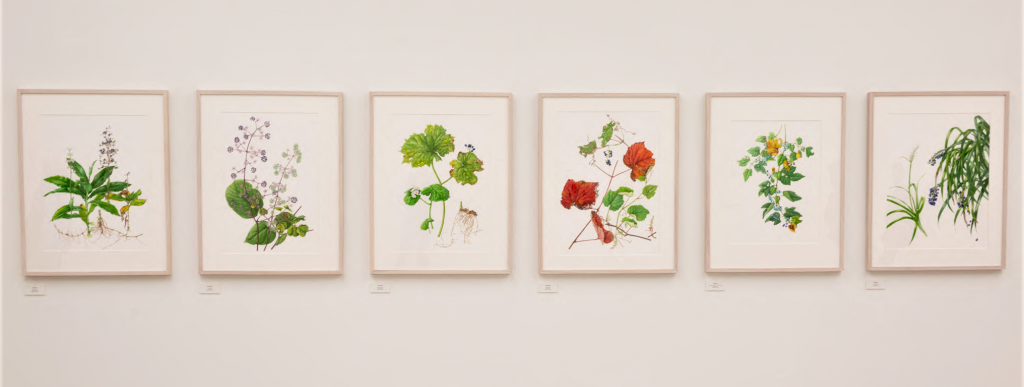- Sunday, May 05, 2024

By: Amit Roy
Call for British Asians to enter RHS competition that even considers mobile photos

BRITISH Asians are being encouraged to enter the Botanical Art & Photography Show, run annually by the Royal Horticultural Society.
This year the best entries from 2020 and 2021 will remain on display at the Saatchi Gallery near Sloane Square in London until October 9. In all, there are some 200 pieces featuring the work of 15 artists and 19 photographers.
This year’s exhibition ran alongside the Chelsea Flower Show, a short walk away from the gallery. During the time of the Raj, the British – women especially – painted the fauna and flora they found in India. Their work has pride of place among the 30,000 items held at the RHS Lindley Library in Vincent Square in London.
It is felt that British Asians would be returning the compliment if they started painting and photographing what inspires them in gardens and woods in this country.
Laura C Uccello, director of partnerships at Saatchi Gallery, said, “We are thrilled to partner with the RHS to present this internationally recognised exhibition that celebrates contemporary art with an incredibly interesting scientific scope.”
Eastern Eye spoke to Charlotte Brooks, RHS art curator and to Sian Tyrrell, head of Horticultural Information and RHS portfolio photography leader. In this exhibition, the artists and photographers have submitted six works each to illustrate a theme.
Their images have to be scientifically accurate so that identification of what they have painted or photographed is possible.
For the prizes, “a panel of recognised experts, including leading botanical artists, photographers, teachers and botanists judge the exhibits on display, assessing their accuracy, skill, and aesthetic appeal”.
So, what inspired the British to take up the brush when they were in India?
Brooks said, “We see two areas here, historically. We see dedicated, interested amateurs who were perhaps overseas in relation to their family having travelled or perhaps they’d been posted for a work position, and have found themselves overseas. And it was a way of being able to engage with the local area.
“So, this was to start to understand the plants, understand where they were, this place where they hadn’t visited before. And what we see, certainly for 19th century, maybe early 20th century, are amateur artists and their way of getting to know their locality.
“Often, they were keen gardeners at home.
“To be able to create a new garden in a new environment would be quite exciting. And we do have a number of examples in the RHS library of works like that of artists who have perhaps followed their husbands overseas for work and this is the way they have sought to, kind of, connect with their local environment.”
Brooks said there was another group of artists.
“What we do see from a more professional point of view are artists employed to work alongside botanists, to record local flora and fauna, as a means of identification and to help inform new plant names and also to help inform knowledge of botany and in scientific practice.”
She said the collections at the RHS library “date to 1630 – we go back roughly 400 years”.
She added: “If you were an artist working alongside a botanist or had a patron, somebody who was perhaps wealthy with a great interest in horticulture and in botany, it was a good way to make a living.”
On display this year are watercolours paintings of tomatoes, some in cross-section, by Francesca Ross.
“She has painted the tomatoes, this was a process of four years, growing her specimens herself, so she really understood them, she really she knows them,” said Brooks.
Japanese artists and photographers are also well represented in the current exhibition.
“This is a very, very strong tradition in Japan, some exceptional artists who have been practising for a long time, and, and a number of very highly skilled botanical art teachers as well,” confirmed Brooks.
“We were very lucky to have very talented Japanese botanical artists who have exhibited with
us at the show.”
Brooks made the point that the artists are “welcome to use a medium that is suitable for botanical arts – might be watercolour, or pen and ink, graphite, coloured pencil, but a medium that enables them to get fine detail and fine observation of their subject.
“The artists are at liberty to choose the subjects that they paint or draw. But they must exhibit a display that has a theme to it, they can choose the theme of their works. They have to have skill, drawing and painting or colour application to be able to create a painting that is scientifically accurate, so you can identify the plant, but is also aesthetically pleasing.”
Next door, her colleague Sian Tyrell was admiring the photographic entries. She laughed when asked about the difference between botanical art and photography because sometimes it was difficult to tell which was which.
She replied: “That’s a very blurry line in some cases. You can see, actually, in this exhibition, there are some pieces, which you would think perhaps would fit in with botanical art.
“But, ultimately, photography is about producing the artwork using light as the medium. So whether that’s with a camera, or like one of our exhibits with a scanner, it’s produced using a light-based process in order to produce that photograph. But there are definitely works in here which would sit equally well in a botanical art exhibition.
“And some of the botanical art is very photographic in its approach and the level of detail and the way it’s been rendered. So it can be a little bit of a false distinction between botanical art and photography.”
She added, “There’s no reason why people shouldn’t enter images that they’ve taken on a mobile phone because today’s mobile phones are very good. If you can compose a good image, there’s absolutely no reason why you would need an expensive camera. It’s much more about the composition.”
“We have a number of exhibits in here that were based on the idea of the pandemic. So photographers who were inspired by the restrictions, who went out there and explored their local area much more or their own garden, and some of those feature in the exhibition.”
On getting more British Asians to enter, she was encouraging. “The RHS photographic competition is open to anyone to enter. And it’s currently open. And you can find the details on the RHS website. If you wish to submit for portfolio, which is this particular category we have in the exhibition, it’s judged a little bit differently. The main photographic competition has a whole bunch of categories. And you can enter just one image into any one of those categories.”
RHS Botanical Art & Photography Show at the Saatchi Gallery finishes on October 3, 2021.